#yongyan
Explore tagged Tumblr posts
Text
a quiet observation on the side
Ye Baosheng barely touched the love subject with her son. With countless tribulations he had experienced (that he shouldn't have), it would have been better if love or sex was just Yiyong's only problem. But the days after Yiyong woke up the second time, she thought that she didn't really need to worry about it.
"Without an immediate resuscitation, he would've been dead on arrival." That's what the doctors said. Guangyan passed out on Chuying's tired shoulder then, while Cui Zhaowan took over the arrest of the serial killer in the museum.
Ye Baosheng found them like this, Chuying's arm wrapped around Guangyan's shoulders while the boy slept in her arms. Both their hairs and clothes were disheveled and covered in blood.
Chuying smiled at her, trying to fight the tears from falling. I'm sorry, she whispered. It's all my fault.
No, thank you, said Mrs. Ye, shaking her head as she squeezed Chuying’s hands.
He was targeted by that bastard. I was too late. And Xiaoyan didn't want to leave his side. He's scared.
Ye Baosheng wondered when it started. She vaguely remembered how Yiyong used to sneak inside Guangyan's room.
If she didn't tell Guangyan that it was time already for his internship, he would have been stuck at Yiyong's bedside all day. He would read his textbooks there or if he wasn't busy with schoolworks, he would finish all the comics in Yiyong's room. One time, Guangyan fell asleep while pillowing his Forensic Medicine textbook. Ye Baosheng slowly pulled it underneath his head to replace it with a comfortable pillow and covered Guangyan with a cotton blanket.
Sometimes, she would hear him talk to Yiyong. About his day at the hospital, about the patients he had met, and the tragic cases he would encounter there. In fact, his two high school best friends and Chuying were the same, but the difference between them was Guangyan would reach out for Yiyong's hand and then hesitate, and finally reach out when he thought that nobody was looking.
That same night, Guangyan fell asleep with half of his body on the bed while holding Yiyong's hand. Mrs. Ye smiled to herself and closed the door gently. Everything was going to be fine.
#oh no! here comes trouble#i wrote this a long time ago but#i just feel like posting it now#i miss them so much#my yongyan#yongyan#cao guangyan#pu yiyong#short fic#不良執念清除師
5 notes
·
View notes
Text
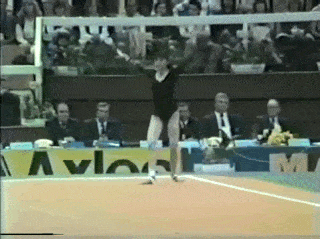
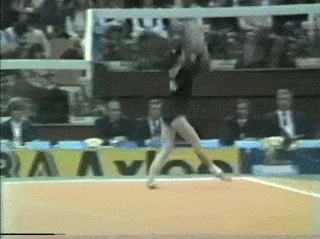
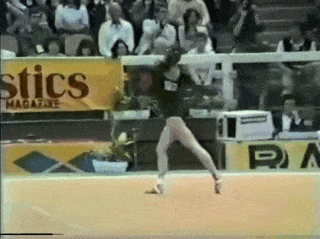
I feel like when I watch 90s meets the commentators are always talking about how China used to have terrible choreography and they only recently stepped their game up, but like... look at Chen Yongyan in 1983! Beautiful!
30 notes
·
View notes
Note
What was the prince/princess position during the Qing Dynasty?
During Ruyi's series I noticed how arrogant Jingse was with the concubines and thought she was better than her brothers precisely because she was a legitimate princess and the oldest among them all. I know all princes are supposed to refer to their father's concubines as "mother." This left me intrigued, even though I know this was just for the plot, I can believe that in real life many princesses/princes were like this because of their mothers' position.
Jingse's arrogance is based on a system called di-shu which is a hierarchy between the children born of official wives (di) vs. children born of concubines (shu). See the linked Wikipedia for details, but for reference, of the children who have screentime in the drama, the hierarchy would likely be:
Yonglian (as the eldest di son, whose mother is the official wife, actually the second son)
(Yongcong, second di son, actually seventh son, mother is the official wife)
Jingse (as the eldest di daughter, whose mother is the official wife, actually the third daughter - first and second all died young)
Yongji (as a di son, whose mother was also the official wife when he was born, but she was the second wife, who is considered subordinate to the first, actually twelfth son)
(Yongjing - thirteenth son, Jingsi - fifth daughter, mother is the second wife)
Yonghuang (eldest son, but still considered lower than sons born of official wives because his mother was a concubine. Yonghuang's position is specified a shuzhangzi 庶长子 (aka eldest son whose mother is a concubine, which is a very precarious position as technically he should be ranked on top but can't be because of his mother's position, but being the eldest he is a threat to Yonglian's position which is why Langhua hates him so much.)
Other princes according to order of birth*
Other princesses according to order of birth*
*but also sometimes according to the prestige of/amount of favour enjoyed by their mothers
In Legend of Zhen Huan, the empress' entire villian backstory was rooted in di-shu. A lot of dramas like Story of Minglan, The Sword and the Brocade revolves around the fate of unfavoured shu daughters where a lot of the angst/conflict stems from their inferior position in the household.
In terms of choosing an heir/successor, the three main debates are between choosing the di son 立嫡, the eldest son 立长, or the most talented 立贤. Of course, the perfect choice would be the eldest di son who hopefully would also be talented.
Qianlong due to his (in drama) backstory of his mother being a palace maid has a big hang up regarding the di-shu positions of his children. For a long time he was only in favour of making his di sons successors, and part of the conflict between him and Ruyi later was because Qianlong still wanted to make Yongji his successor despite him being not that suited for the position and Ruyi clearly not wanting him to inherit the throne.
When he chooses Yongqi it was a case of choosing for talent. Although, at the time, Yongqi is also technically the eldest since Yonghuang, Yonglian, Yongzhang have all died and Yongcheng has been disinherited/adopted out.
By the time he choose Yongyan I guess he didn't have that many choices left:
Yonghuang, Yonglian, Yongzhang, Yongqi, Yongcong - dead
Yongcheng - adopted out
Yongrong - probably tainted by association to Luyun and Yongzhang
Yongxuan & Yongxing - tained by association to Yuyan and Yongcheng
Yongji - probably also dead by then
Yongyan
Yonglin - younger than Yongyan so between the two of them obvious Yongyan was the one
For someone who had 17 sons, he really didn't have that many choices for a successor ¯\_(ツ)_/¯
25 notes
·
View notes
Text
5 Reasons Why The Qianlong Emperor excluded Yongcheng from The Imperial Heirdom
Concerns About Yongcheng’s Character
Historical records suggest that Yongcheng was considered mediocre in ability and lacked the political astuteness required to be emperor. The Qianlong Emperor was known to value intelligence, self-control, and capability above all in an heir, and he found Yongcheng lacking in these qualities.
The Qianlong Emperor’s Succession Philosophy
Qianlong was strongly influenced by his father, the Yongzheng Emperor, who selected him secretly based on merit. Qianlong did not strictly follow primogeniture and wanted to ensure his successor would maintain the stability and legacy of the Qing dynasty. He was very cautious and observant when it came to evaluating his sons.
Political and Court Dynamics
Although Yongcheng held a prince title (he was made Prince Lü of the First Rank), it seems that:
He was never seriously considered as a primary contender for the throne
He may not have had strong backing among key officials or within the imperial family.
His actions and decisions in court affairs did not distinguish him positively in Qianlong’s eyes.
Preference for the 15th Son, Yongyan (Later Emperor Jiaqing)
The son who ultimately succeeded Qianlong was his 15th son, Yongyan, who became the Jiaqing Emperor. Yongyan was known for his diligence, cautious nature, and modest behavior — qualities Qianlong admired. Despite not being one of the eldest, Yongyan’s personal character and behavior fit Qianlong’s ideal of a ruler.
Avoidance of the Kangxi Problem
The Qianlong Emperor had seen how his grandfather, Kangxi, faced severe succession crises due to conflicts among his sons. Qianlong was determined not to repeat those mistakes. Therefore, he carefully avoided elevating any prince too early or obviously, especially if they showed arrogance or court faction-building behavior — something Yongcheng may have flirted with or failed to avoid.
Conclusion:
Yongcheng was excluded from succession because the Qianlong Emperor did not find him suitable — he likely lacked the intellect, judgment, and temperament that Qianlong believed essential in an heir. His exclusion was consistent with Qianlong’s careful, merit-based approach to selecting a successor.
9 notes
·
View notes
Text
Empress Xiaoherui of the Qing Dynasty (1801-1820) The Longest Reigning Empress of Qing

The longest reigning empress consort of the Qing Dynasty was born on 20 November 1776 to the Manchu Bordered Yellow Banner Niohuru clan. Her personal name was not recorded in history.
Lady Niohuru would marry the future Jiaqing Emperor sometime in 1790 and became his secondary consort. She would give birth to three children: an unnamed daughter who died young, Minkai, the emperor's third son, and Mianxin, the emperor’s fourth son.
When Yongyan ascended the throne in 1796, Lady Niohuru was granted the title of Noble Consort. After the death of Empress Xiaoshurui a year into the emperor’s reign, Noble Consort Niohuru was put in charge of the harem and elevated to Imperial Noble Consort.
It is known that the Jiaqing wished to promote her to empress but was forced to wait until the mourning period would end. Unfortunately, the previous emperor would also pass away during this time so the Imperial Noble Consorts promotion was once again delayed until the spring of 1801.
During this time she was given the task of raising Mianning, the previous empress’s young son. The two were known to have a close relationship, so much so that when her husband would die in 1820 without naming an heir Empress Niohuru would not hesitate to name Mianning as the next emperor over either of her two sons.
Mianning, the now Daoguang Emperor, was extremely pleased by her dedication and granted her the title of Empress Dowager Gongci and moved her into the Palace of Longevity and Health, a palace that usually belonged to the emperor’s mother. They would maintain a close relationship until her death on 23 January 1850. She was Empress Consort for over 19 years, making her the longest serving empress consort of the Qing.
Titles:
Lady Niohuru (from Nov 1776)
Secondary Consort (from 1790)
Noble Consort (from Feb 1796)
Imperial Noble Consort (from June 1797)
Empress (from May 1801)
Empress Dowager Gongci (from Sept 1820)
Empress Xiaoherui (posthumous from April 1850)
7 notes
·
View notes
Text

Day 26: Lady Wei, Empress Xiaoyichun
Lady Wei (like many women of her era, her personal name is lost to history) was a palace servant during the reign of the Qianlong Emperor. Her family was eventually raised to the nobility as the Weigiya, but that was thanks to her - they began as hereditary bond servants, if relatively elite ones. Lady Wei seems to have been a servant for either - or both of - the Emperor’s influential mother, Lady Niohuru, or his beloved first wife, Empress Fucha. This enabled her to catch the Emperor’s eye, and in 1745, she entered his harem as Noble Lady Wei. Her rise after that was remarkably quick - she rose two ranks to Consort Ling before she’d even given birth to a child, and her ensuing four surviving children solidified her place in the Emperor’s favor.
In 1765, a figurative earthquake struck the court - Empress Nara, the Qianlong Emperor’s second wife and a previous Awesome Lady of History herself, was abruptly disgraced and stripped of power. Lady Wei, trusted by the Emperor, was promoted to Imperial Noble Consort, giving her most of an Empress’s duties but not the full title; duties she seems to have carried out diligently and well - perhaps too diligently and well for her health.
Lady Wei died in 1775, after a long illness exarbated by the death of her daughter, Gurun Princess Hejing. The Emperor, as he had done after the death of his first wife, wrote poems in her honor; he had already secretly selected her elder son, Yongyan, as his heir. Upon Qianlong’s “abdication” (as Emperor Emeritus, he retained his hold on the court - he had abdicated both as a show of filial piety towards his long-reigning grandfather and to better control a potential succession crisis), Yongyan became the Jiaqing Emperor - and Lady Wei was posthumously declared Empress.
#empress xiaoyichun#chinese history#qing dynasty#history#awesome ladies of history#october 2023#my art#watercolor pencils
11 notes
·
View notes
Text






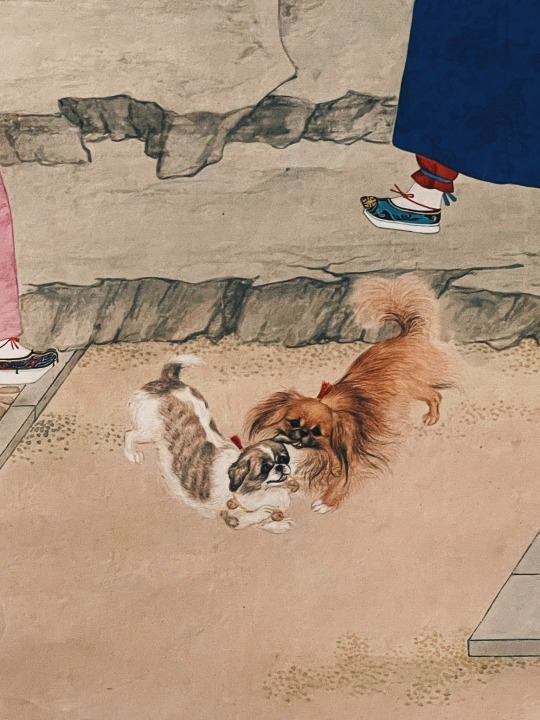
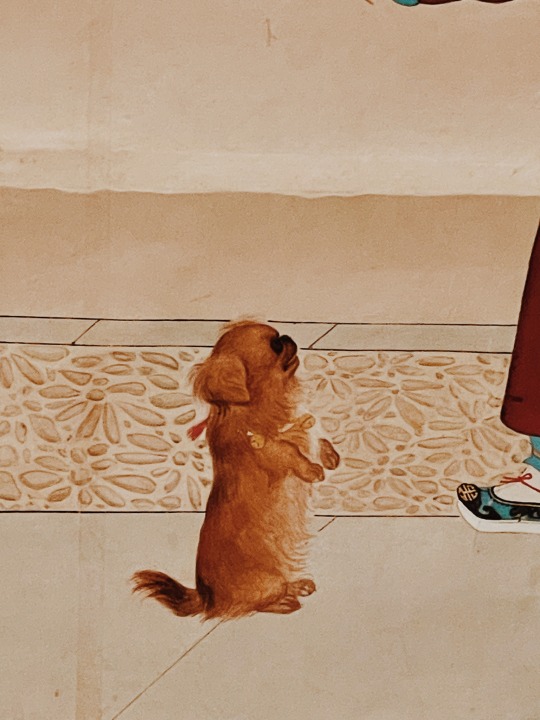


Part 2 of artifacts from the newly opened Yuanmingyuan / Old Summer Palace exhibition at the Hong Kong Palace Museum:
1 - Detail of a painting and one of “The Twelve Beauties”. I adore the linework and shading; it looks so modern. And look at those nails!
2 - Poems. The tiny writing!
3 - Detail of a painting of a Lantern Festival celebration including fireworks performances. I zoomed in on the Qianlong Emperor.
4 - A portable censer with dragons and clouds.
5 - Love the composition of this painting. Consort of the Qianlong Emperor and Yongyan.
6 - Set of seals of the Kangxi Emperor.
7 and 8 - Details of paintings. I zoomed in on these cute royal dogs playing with children. They reminded me of poor little “Looty,” the Pekingese who was taken by the British when they and the French destroyed Yuanmingyuan (she was found with four other Pekingese mourning and guarding the body of the emperor’s elderly aunt, who committed suicide when she heard the plundering outside) and given to Queen Victoria, who gave her that terrible name. She ended up living a lonely life, longing for her homeland, and, unlike the Queen’s other dogs, was buried in an unmarked grave.
9 and 10 - The exhibition’s last room, which described the destruction and ruin and Yuanming Yuan.
// (c) Jenny Lam 2024
#fashion#style#clothes#nails#chinese painting#art#photography#travel#travel photography#chinese#chinese history#history museum#history#art history#hong kong#museums#museum#photos#painting#dogs
4 notes
·
View notes
Text
Complex & Intelligent Systems, Volume 11, Issue 7
1) Cognition of decision behavior based on belief state: a case study of implementation in CGF simulation system
Author(s): Jintao Wang, Huaiqi Chen, Yunting Zhang
2) A noise-constrained lightweight high-quality image hiding method based on invertible neural networks
Author(s): Minghui Zhu, Dapeng Cheng, Jinjiang Li
3) Disentangled diffusion dodels for probabilistic spatio-temporal traffic forecasting
Author(s): Wenyu Zhang, Kaidong Zheng
4) Data-driven fault-tolerant consensus for multiagent systems under switching topology
Author(s): Yuan Wang, Zhenbin Du
5) Advancing sustainable electricity markets: evolutionary game theory as a framework for complex systems optimization and adaptive policy design
Author(s): Lefeng Cheng, Runbao Sun, Mengya Zhang
6) A dual-image encryption scheme for sensitive region of traffic image using public key cryptosystem and novel chaotic map
Author(s): Tingyu An, Tao Gao, Donghua Jiang
7) Distributed semi-supervised partial multi-dimensional learning via subspace learning
Author(s): Zhen Xu, Weibin Chen
8) Preference-based expensive multi-objective optimization without using an ideal point
Author(s): Peipei Zhao, Liping Wang, Qicang Qiu
9) Correction to: Fractals in Sb-metric spaces
Author(s): Fahim Ud Din, Sheeza Nawaz, Fairouz Tchier
10) Information coevolution spreading model and simulation based on self-organizing multi-agents
Author(s): Guoxin Ma, Kang Tian, Yongyan Wang
11) Fusing feature consistency across views for multi-view stereo
Author(s): Rong Zhao, Caiqin Jia, Xie Han
12) Towards few-shot learning with triplet metric learning and Kullback-Leibler optimization
Author(s): Yukun Liu, Xiaojing Wei, Hai Su
13) A novel two stage neighborhood search for flexible job shop scheduling problem considering reconfigurable machine tools
Author(s): Yanjun Shi, Chengjia Yu, Shiduo Ning
14) A novel multi-agent dynamic portfolio optimization learning system based on hierarchical deep reinforcement learning
Author(s): Ruoyu Sun, Yue Xi, Jionglong Su
15) An adaptive initialization and multitasking based evolutionary algorithm for bi-objective feature selection in classification
Author(s): Hang Xu, Bing Xue, Mengjie Zhang
16) Fine-grained entity disambiguation through numeric pattern awareness in transformer models
Author(s): Jaeeun Jang, Sangmin Kim, Charles Wiseman
17) A novel adversarial deep TSK fuzzy classifier with its inverse-free fast training
Author(s): Limin Mao, Hangming Shi, Suhang Gu
18) Strength prominence index: a link prediction method in fuzzy social network
Author(s): Sakshi Dev Pandey, Sovan Samanta, Tofigh Allahviranloo
19) Genderly: a data-centric gender bias detection system
Author(s): Wael Khreich, Jad Doughman
20) Two-stage multi-attribute reviewer-paper matching decision-making in a Fermatean fuzzy environment
Author(s): Qi Yue, Kaile Zhai, Yuan Tao
21) RTL-Net: real-time lightweight Urban traffic object detection algorithm
Author(s): Zhiqing Cui, Jiahao Yuan, Zhenglong Ding
22) Contrastive learning of cross-modal information enhancement for multimodal fake news detection
Author(s): Weijie Chen, Fei Cai, Yijia Zhang
23) A lightweight mechanism for vision-transformer-based object detection
Author(s): Yanming Ye, Qiang Sun, Dongjing Wang
24) Correction to: Enhancing cyber defense strategies with discrete multi-dimensional Z-numbers: a multi-attribute decision-making approach
Author(s): Aiting Yao, Chen Huang, Xuejun Li
25) GCN and GAT-based interpretable knowledge tracing model
Author(s): Yujia Huo, Menghong He, Kesha Chen
26) A classifier-assisted evolutionary algorithm with knowledge transfer for expensive multitasking problems
Author(s): Min Hu, Zhigang Ren, Yu Guo
27) Utilizing weak graph for edge consolidation-based efficient enhancement of network robustness
Author(s): Wei Ding, Zhengdan Wang
28) AI-enabled driver assistance: monitoring head and gaze movements for enhanced safety
Author(s): Sayyed Mudassar Shah, Gan Zengkang, Farman Ali
29) Path planning method for maritime dynamic target search based on improved GBNN
Author(s): Zhaozhen Jiang, Xuehai Sun, Lianglong Da
30) Correction to: Demonstration and offset augmented meta reinforcement learning with sparse rewards
Author(s): Haorui Li, Jiaqi Liang, Daniel Zeng
31) Joint feature representation optimization and anti-occlusion for robust multi-vessel tracking in inland waterways
Author(s): Shenjie Zou, Jin Liu, Bing Han
32) Graph-based multi-attribute decision-making method with new fuzzy information measures
Author(s): Lili Zhang, Shu Sun, Chunfeng Suo
33) Multiobjective integrated scheduling of disassembly and reprocessing operations considering product structures and stochastic processing time via reinforcement learning-based evolutionary algorithms
Author(s): Yaping Fu, Fuquan Wang, Hao Sun
34) Multi-granularity feature intersection learning for visible-infrared person re-identification
Author(s): Sixian Chan, Jie Wang, Jiafa Mao
35) DEBPIR: enhancing information privacy in decentralized business modeling
Author(s): Gulshan Kumar, Rahul Saha, Tai Hoon Kim
36) Joint optimization of communication rates for multi-UAV relay systems
Author(s): Chenghua Wen, Guifen Chen, Wenzhe Wang
37) PLGNN: graph neural networks via adaptive feature perturbation and high-way links
Author(s): Meixia He, Peican Zhu, Keke Tang
38) Graph attention based on contextual reasoning and emotion-shift awareness for emotion recognition in conversations
Author(s): Juan Yang, Puling Wei, Jun Shen
39) Eye contact based engagement prediction for efficient human–robot interaction
Author(s): Magnus Jung, Ahmed Abdelrahman, Ayoub Al-Hamadi
40) Siamese network with squeeze-attention for incomplete multi-view multi-label classification
Author(s): Mengqing Wang, Jiarui Chen, Xiaohuan Lu
41) Enhanced APT detection with the improved KAN algorithm: capturing interdependencies for better accuracy
Author(s): Weiwu Ren, Hewen Zhang, Zhiwei Wang
0 notes
Text
Liu Yongxing – Visionary Founder and CEO of East Hope Group
Early Life and Education
Liu Yongxing, born in June 1948 in Sichuan, China, grew up in a family of farm workers alongside his three brothers, Liu Yongyan, Chen Yuxin, and Liu Yonghao, and his sister, Liu Yonghong. The family faced social challenges due to their background as wealthy landlords prior to the Cultural Revolution. Despite these challenges, Liu pursued education and graduated from Xihua University in 1968.
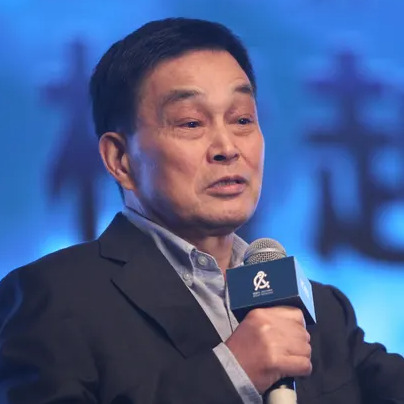
Personal Life Liu Yongxing is married to a psychologist, and together they have one child. The family resides in Shanghai, China.
Career Beginnings
In the late 1970s, Liu and his brothers ventured into the electronics industry by founding a company that ultimately closed due to the political climate, which viewed such enterprises as overly capitalistic. Undeterred, the brothers pivoted to agribusiness in 1982, pooling their resources to start the Hope Group. The company initially focused on raising quail and hatching chickens in Sichuan Province and later expanded to establish the Hope Research Center for animal feeds in 1986.
Formation of East Hope Group
In 1995, the Hope Group split into four separate entities: West Hope Group, New Hope Group, Continental Hope Group, and East Hope Group. Liu Yongxing retained parts of the agricultural business and expanded into the heavy chemical and aluminum industries. This led to the foundation of East Hope Group, which has grown to become one of the largest aluminum producers in the world. By 1999, Liu had relocated the headquarters of East Hope to Shanghai.
Challenges and Achievements
Liu Yongxing has faced criticism regarding environmental pollution from East Hope’s factories. Despite his claims of adhering to stringent environmental standards, the company has been penalized multiple times for exceeding emission caps. In response to environmental concerns, significant funds have been allocated to upgrade environmental protection facilities, and innovative waste disposal technologies have been implemented.
Notable Incidents
In December 2016, a tragic accident occurred at East Hope’s Sanmenxia plant, where a red mud reservoir failure resulted in two fatalities. Earlier inspections had deemed the facilities compliant with safety standards, and as of yet, the company has not faced major repercussions for the incident.
Recognition and Wealth
Liu Yongxing’s contributions to China’s economy have earned him prestigious awards, including the “2001 CCTV Top 10 China’s Economic Leaders” and the “Sohu 2001 Top 10 Financial Leaders.” He is recognized as one of the richest individuals in China, with a net worth placing him high on Forbes’ China Rich List and Bloomberg’s Billionaires Index. His brothers also share similar success, each leading their own prosperous companies.
Positions and Influence
Liu Yongxing serves as the founder, chairman, and CEO of East Hope Group. He holds honorary and academic positions, including honorary president of the Shanghai Chamber of Commerce in Sichuan and part-time professor at China Agricultural University. He is also an MBA lecturer and a member of the Standing Committee of the Chinese People’s Political Consultative Conference (CPPCC).
Liu Yongxing’s journey from a challenging upbringing to becoming a prominent business magnate exemplifies resilience and strategic vision, marking significant contributions to China’s industrial and economic landscape.
0 notes
Text
TOC: International Review of Applied Linguistics in Language Teaching (IRAL) Vol. 62, No. 1 (2024)
Editorial Introduction: textual analysis to inform language learning and teaching Wenjuan Qin, Paola Uccelli pp. 1-4 Research Articles Open Access Internal and external appraisals of analytical writing. A proposal for assessing development and potential improvement Liliana Tolchinsky, Elisa Rosado, Melina Aparici pp. 5-36 Group trends and individual variability in writing development: a descriptive grammatical complexity analysis Wenjuan Qin, Huixian Li, Yongyan Zheng pp. 37-60 Exploring in http://dlvr.it/T47TX1
0 notes
Photo
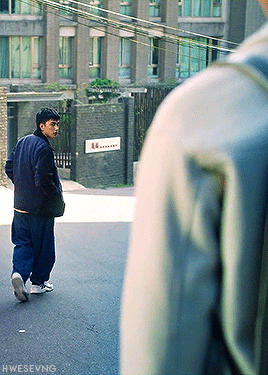
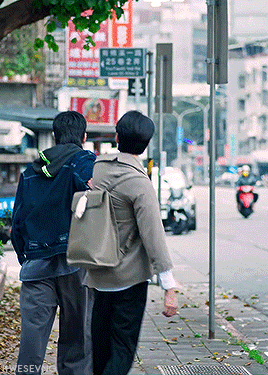

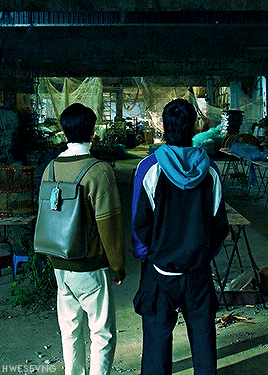
don’t go where i can’t follow
#oh no! here comes trouble#不良執念清除師#userdramas#asiandramasource#dailyasiandramas#cdramasource#lextag#baek1nho#usergooseras#mostlyfate#peng cian you#tseng jing hua#twdramaedit#*onhct#yongyan#m.gif#*pcy#idk what exactly i'm aiming for but#hope y'all see the vision#the way guangyan leaned in in gif 4 drove me insane btw
639 notes
·
View notes
Note
I'm writing something and including Qing dynasty in it and I have a question, because in the honorifics post you haven't mentioned (I'm pretty sure, if I somehow missed it, then sorry) how the emperor addresses his children, is it just ‘prince’ or something else.
Also is there a heir/crown prince title?
Sorry if this was asked before.
The emperor would address his children by their name. If he talks about them in the third person to other people he might refer to them by their title out of courtesy.
The last prince who was publicly made a Crown Prince in the Qing dynasty was Kangxi's second son Yinreng. He was deposed as Crown Prince twice and afterwards, Emperor Kangxi no longer appointed a Crown Prince, which led to a famous dispute between 9 of his remaining sons for the throne. The severity of this battle for the throne led to Yongzheng to refrain from publicly announcing a Crown Prince but instead writing a will and hiding the name of his successor behind a plaque in the throne room. This practice was followed by other emperors after him. After Yunreng, the only princes who became known to have held titles of Crown Prince were Yonglian and Yongyan. With Yonglian, Qianlong only revealed he had named Yonglian as his successor after Yonglian had died, and his public title of Crown Prince was granted posthumously. As Yongyan, he was only named Crown Prince as a step towards Qianlong abdicating the throne to him.
11 notes
·
View notes
Text
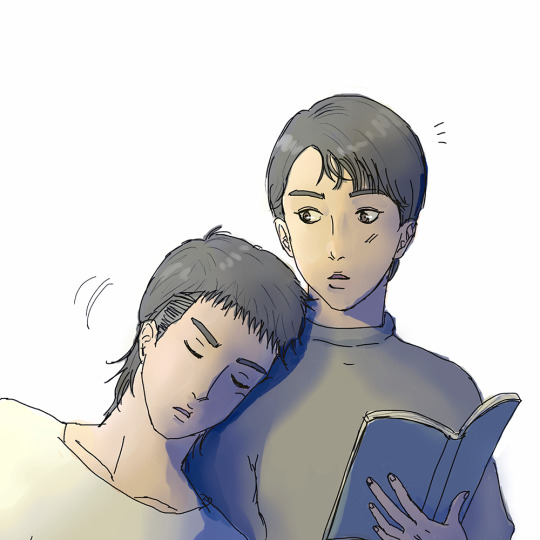
瞌睡一永&看書光硯
46 notes
·
View notes
Text
Empress Xiaohurui of the Qing Dynasty (1796-1797)
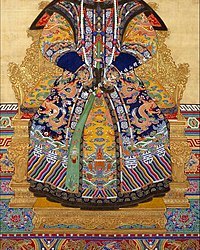
Empress Xiaoshurui was born on 2 October 1760 to the Manchu Plain White Banner Hitara clan. Like many women of her time, her personal name was never recorded in history.
Lady Hitara would marry Prince Yongyan, the future Jiaqing Emperor, on 5 June 1774 and became his primary consort. She would give birth to three of his children: an unnamed second daughter who would die young, Mianning, the emperor’s second son and future Daoguang Emperor, and Princess Zhuangjing of the First Rank.
In February of 1796 the Qianlong Emperor abdicated his throne and named Yongyan as Emperor. Lady Hitara was installed as Empress Consort a few days later on 12 February 1796. Unfortunately, Empress Hitara would only reign for a single year. She succumbed to illness on 5 March 1797.
Titles:
Lady Hitara (from Oct 2, 1760)
Primary Consort (from June 1774)
Empress (from Feb 1796)
Empress Xiaoshu (posthumous from May/June 1797-April/May 1821)
Empress Xiaoshurui (posthumous from April/May 1821)
3 notes
·
View notes
Text
Watch "Oh No! Here Comes Trouble (HUMOR) - Uptown Funk" on YouTube
youtube
Pu Yiyong & Cao Guangyan goes from "I can't tolerate you" to "I can't tolerate my day if it isn't with you"
#oh no! here comes trouble#Onhct#Pu yiyong#cao guangyan#chen chuying#Pu yiyong & Cao Guangyan#Yongyan#Comedy#Humor#tseng jing hua#peng cian you#vivian sung#Fmv#Youtube
35 notes
·
View notes
Text
my current standard for a ship right now is if they're gonna fit the great war's narrative
#the great war taylor swift#IM JUST CONVINCED SHE WROTE IT FOR MY FAVORITE SHIPS#ALL THAT BLOODSHED CRIMSON CLOVER THE WORSE WAS OVER MY HAND WAS THE ONE YOU REACHED FOR ALL THROUGHOUT THE GREAT WAR#patpran#steddie#tianjiu#ronance#wilmon#darlentina#seanwhite#tintol#singgap#suho sieun#shse#pingxie#heihua#yongyan#fanghua#feihua#difang#difanghua#tanthamore#kaihiro#firstprince#hedric#sang yan x wen yifan#du cheng x shen yi#xiao heyun x li shiqing#baabinbua#chian4mod
130 notes
·
View notes